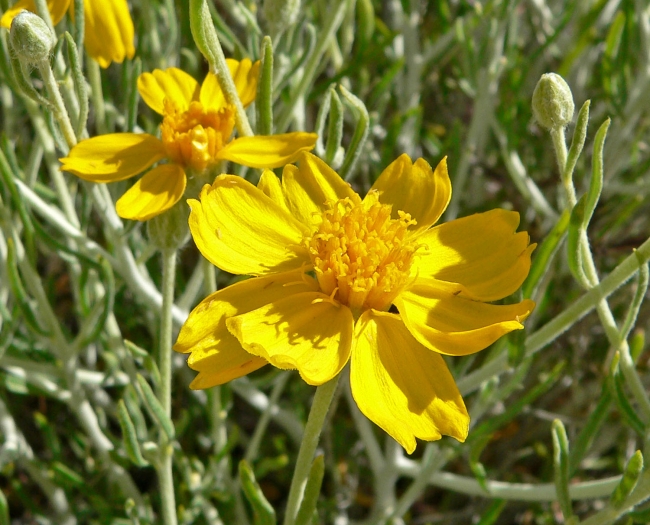Whitestem Paperflower
(Psilostrophe cooperi)
Whitestem Paperflower (Psilostrophe cooperi)
/
/

Stan Shebs
CC BY-SA 3.0
Image By:
Stan Shebs
Recorded By:
Copyright:
CC BY-SA 3.0
Copyright Notice:
Photo by: Stan Shebs | License Type: CC BY-SA 3.0 | License URL: https://creativecommons.org/licenses/by-sa/3.0 | Uploader: Stan Shebs | Publisher: Wikimedia Commons | Title: Psilostrophe_cooperi_3.jpg | Notes: ''Ptilimnium nuttallii'' Robert H. Mohlenbrock @ USDA-NRCS PLANTS Database / USDA SCS. 1991. Southern wetland flora: Field office guide to plant species. South National Technical Center, Fort Worth, TX. From: http://plants.usda.gov/cgi_bin/topics.cgi?ea |



















































Estimated Native Range
Summary
Psilostrophe cooperi, commonly known as Whitestem Paperflower, is a deciduous perennial subshrub native to desert washes, rocky slopes, and scrublands of the Southwestern USA and Baja California. It belongs to the daisy family and is adapted to arid environments. The plant typically forms a nearly spherical shape with stems rising from a woody base. It reaches a height and width of 1-3 feet (0.3-0.9 meters), creating a low, spreading bush with pale green, hairy foliage. Whitestem Paperflower is drought deciduous, meaning it will drop its leaves under drought conditions to conserve water. The daisy-like flower heads feature 3 to 8 deeply toothed golden-yellow ray florets, which are showy and persist even after drying, becoming papery while retaining their color. Flowering occurs from late spring to early fall, providing a long-lasting display of color.
The Whitestem Paperflower is valued for its drought tolerance and extended flowering season, making it an excellent choice for xeriscaping and rock gardens. It is also used for habitat restoration projects due to its adaptability to harsh conditions. In cultivation, it thrives in full sun and requires minimal water once established, preferring well-drained soils. While it is generally low-maintenance, it can be susceptible to root rot if overwatered. This plant is not known for aggressive roots or significant disease problems, but it may spread through self-seeding if conditions are favorable.CC BY-SA 4.0
The Whitestem Paperflower is valued for its drought tolerance and extended flowering season, making it an excellent choice for xeriscaping and rock gardens. It is also used for habitat restoration projects due to its adaptability to harsh conditions. In cultivation, it thrives in full sun and requires minimal water once established, preferring well-drained soils. While it is generally low-maintenance, it can be susceptible to root rot if overwatered. This plant is not known for aggressive roots or significant disease problems, but it may spread through self-seeding if conditions are favorable.CC BY-SA 4.0
Plant Description
- Plant Type: Shrub, Subshrub
- Height: 1-2 feet
- Width: 1-2 feet
- Growth Rate: Moderate
- Flower Color: Yellow
- Flowering Season: Spring, Summer
- Leaf Retention: Deciduous
Growth Requirements
- Sun: Full Sun
- Water: Low
- Drainage: Fast
Common Uses
Erosion Control, Low Maintenance, Showy Flowers, Street Planting
Natural Habitat
Native to desert washes, rocky slopes, and scrublands of the Southwestern USA and Baja California
Other Names
Common Names: White-Stem Paper-Flower , Paper Flower , Cooper’s Paper Daisy
Scientific Names: Psilostrophe cooperi , Riddellia cooperi
GBIF Accepted Name: Psilostrophe cooperi (A.Gray) Greene